Mexico, a land of vibrant culture and rich history, is also a country of incredible geographical diversity. For those seeking interesting Mexico Facts, understanding its physical landscape is key. The country is divided into nine major physiographic regions, each boasting unique characteristics, from arid deserts to lush highlands and tropical peninsulas. These regions shape not only the landscape but also the climate, biodiversity, and human settlement patterns across Mexico. Let’s delve into an exploration of these fascinating areas, revealing some key mexico facts about their formation and features.
The northwestern edge of Mexico is marked by the Baja California peninsula, a stark and beautiful region separating the Pacific Ocean from the Gulf of California. This long, slender strip of land, divided between the states of Baja California and Baja California Sur, stretches nearly 800 miles in length but rarely exceeds 100 miles in width. Geologically, Baja California is a granitic fault block, featuring the Sierra San Pedro Mártir and Sierra de Juárez mountain ranges, where peaks soar to over 9,000 feet above sea level. The western slopes of these mountains descend gently, contrasting sharply with the steep eastern cliffs that plunge towards the Gulf of California, making access from that side particularly challenging. The arid mexico facts of the Sonoran Desert extend into the northern part of the peninsula along the Gulf, contributing to its dry climate and unique desert ecosystem.
Moving eastward and southward along the coast, we encounter the Pacific Coastal Lowlands. These lowlands begin near Mexicali and the delta of the Colorado River in the north and extend approximately 900 miles south to the vicinity of Tepic. Bordered by the Gulf of California to the west and the imposing Sierra Madre Occidental to the east, this region traverses the states of Sonora, Sinaloa, and Nayarit. The landscape is characterized by coastal terraces, mesas, and small basins, interspersed with fertile river deltas and narrow coastal strips. While the Sonoran Desert’s influence is strong in the northern parts, irrigation has transformed sections of these lowlands into highly productive agricultural areas, a testament to human adaptation in diverse mexico facts contexts.
The Sierra Madre mountain range, a defining feature of Mexico’s diverse topography.
The heartland of Mexico is dominated by the vast Mexican Plateau, the most extensive and densely populated of the physiographic regions. This plateau is cradled between the Sierra Madre Occidental and Sierra Madre Oriental mountain ranges and is itself divided into two main sections: the expansive Mesa del Norte (Northern Plateau) and the smaller, yet heavily populated, Mesa Central (Mesa de Anáhuac). The Mesa del Norte stretches from the U.S. border southward, covering large portions of Chihuahua, Coahuila, Durango, Zacatecas, Jalisco, and Aguascalientes states, ending near San Luis Potosí city. From there, the Mesa Central extends to just south of Mexico City. One of the key mexico facts about the plateau is its gradual upward tilt from north to south; the Mesa del Norte starts at an elevation of about 4,000 feet above sea level. The landscape features relatively flat basins and bolsones, interior drainage basins, interspersed with mountainous outcrops. In the northern reaches, the Chihuahuan Desert, larger than the state of California, blankets a significant portion of the plateau, demonstrating the scale of mexico facts related to Mexico’s geography.
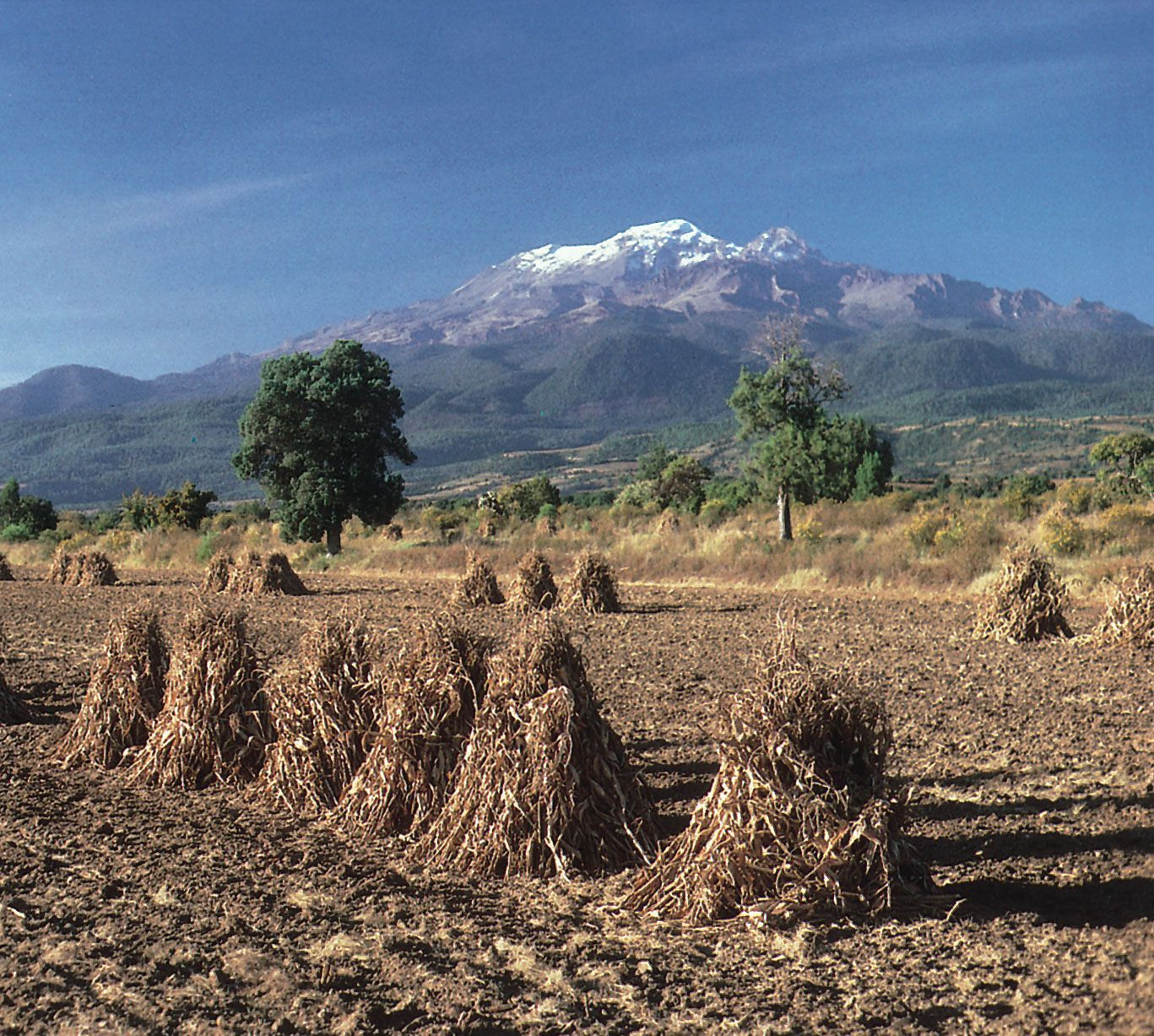 Iztaccíhuatl volcano, Puebla state, Mexico
Iztaccíhuatl volcano, Puebla state, Mexico
The majestic Iztaccíhuatl volcano, a snow-capped peak overlooking the fertile agricultural lands of Puebla state in the Mesa Central, showcasing the dramatic contrasts within Mexico’s landscape.
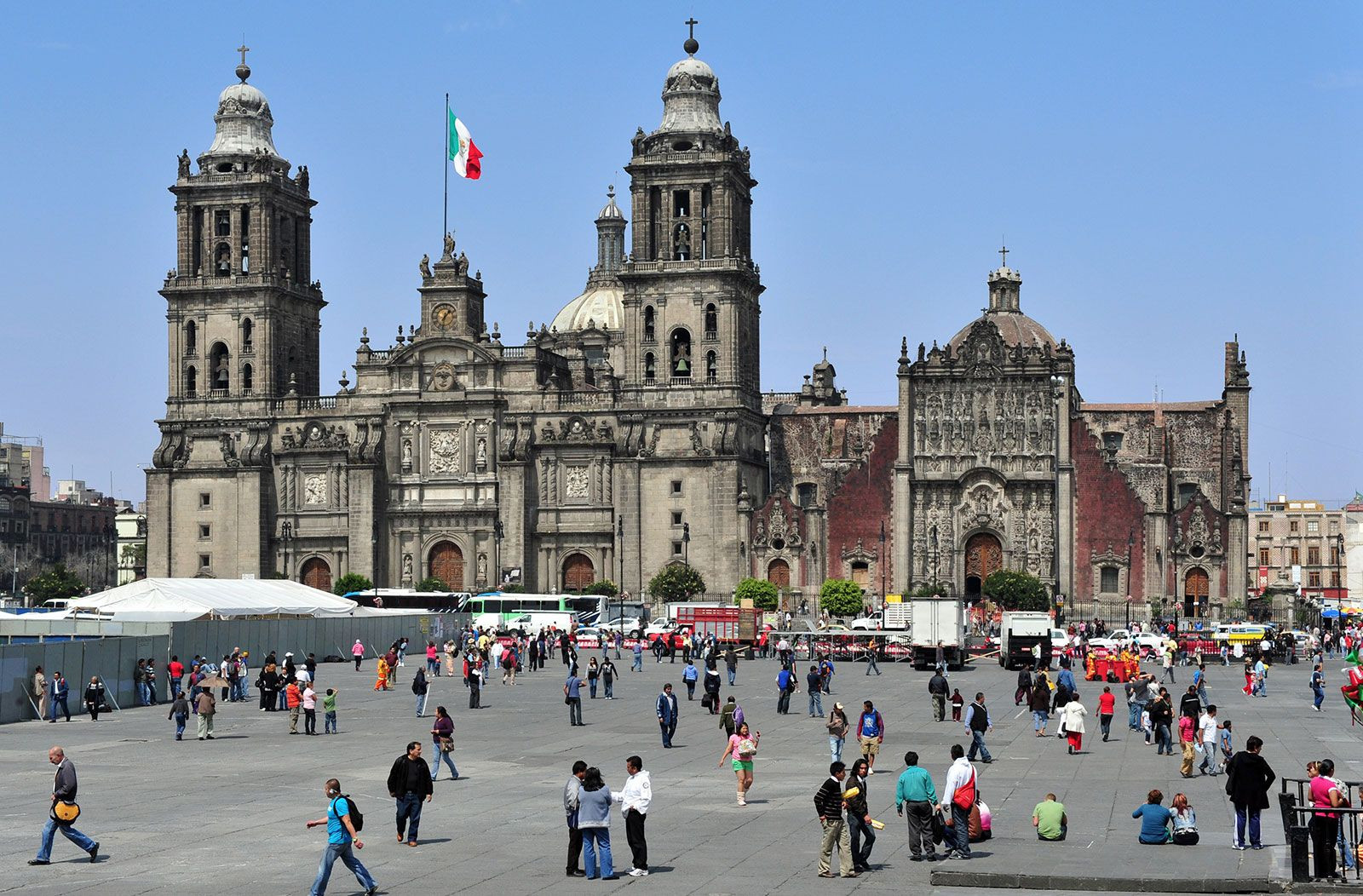 Mexico City: Metropolitan Cathedral
Mexico City: Metropolitan Cathedral
Mexico City’s Metropolitan Cathedral, a historic landmark in the heart of the Mesa Central, illuminated at night, symbolizing the blend of history and modernity in this region.
The Metropolitan Cathedral in Mexico City, a daytime view highlighting its architectural grandeur and historical significance within the Mesa Central.
The Mesa Central encompasses significant portions of Michoacán, Guanajuato, Querétaro, Hidalgo, and México states, as well as Mexico City. Elevations in its southern part, near Mexico City, rise to between 7,000 and 9,000 feet. Compared to the drier Mesa del Norte, the Mesa Central is generally flatter and more fertile, composed of intermontane basins separated by eroded volcanic peaks. These basins, though varying in size, include the Bajío (Basin of Guanajuato), historically known as the country’s breadbasket. Many of these basins were once lakebeds, drained to accommodate European settlement. However, the unstable soils around Mexico City have presented challenges, causing historic buildings like the Metropolitan Cathedral to shift and sink over time, an interesting mexico facts detail about the city’s foundation.
To the west of the Mexican Plateau rises the Sierra Madre Occidental, a largely volcanic mountain range forming the plateau’s western border. With an average elevation of 8,000–9,000 feet and extending roughly 700 miles north to south, it is deeply carved by westward-flowing rivers, creating dramatic gorges known as barrancas. The most famous of these is the Copper Canyon (Barranca del Cobre) in southwestern Chihuahua, a spectacular natural wonder and a key mexico facts location for geographical enthusiasts.
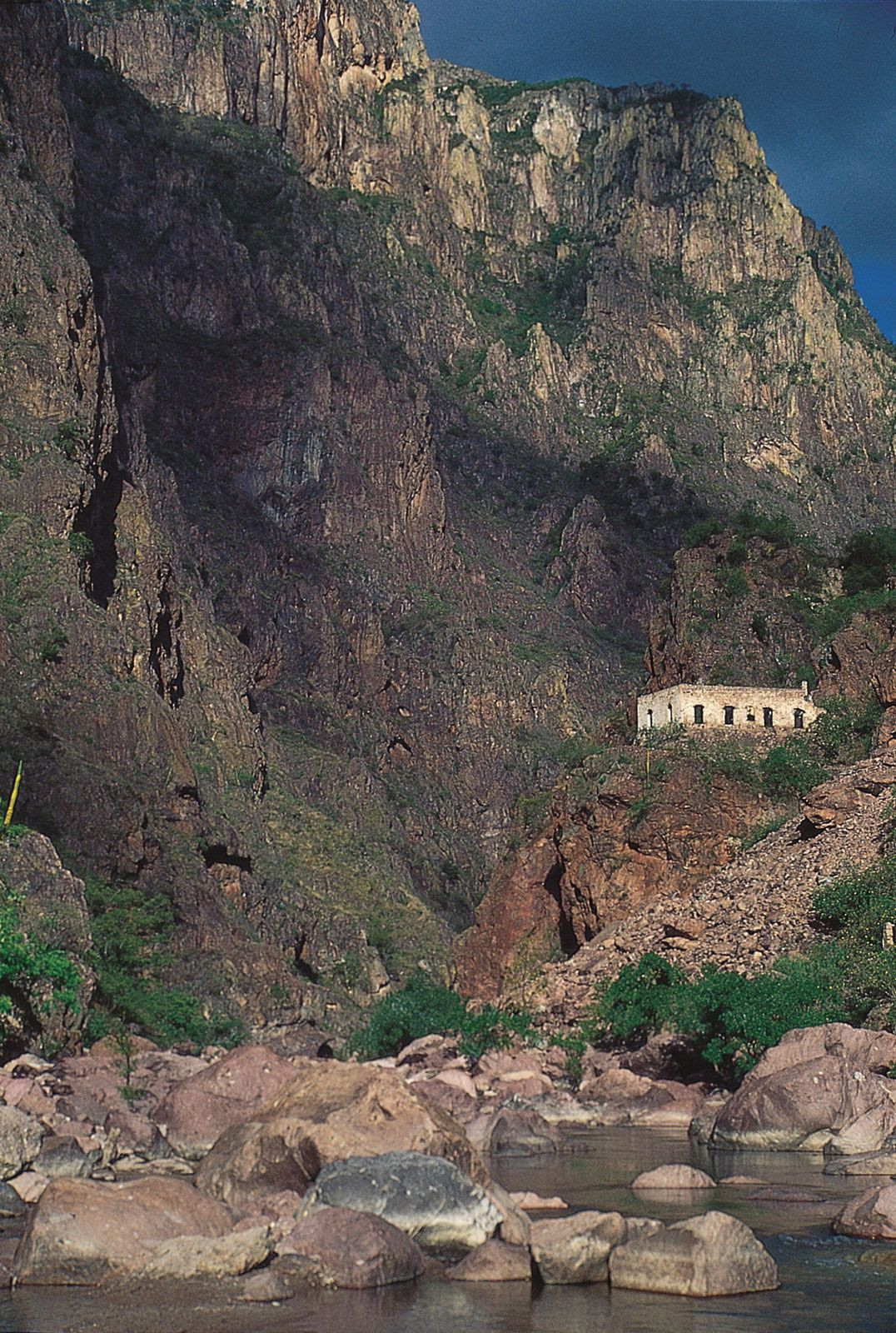 Copper Canyon, Chihuahua state, Mexico
Copper Canyon, Chihuahua state, Mexico
A breathtaking view of Copper Canyon (Barranca del Cobre) in the Sierra Madre Occidental, Chihuahua, showcasing the dramatic gorges carved by rivers over millennia.
On the eastern flank of the Mexican Plateau, the Sierra Madre Oriental stands as a range of folded mountains made of shales and limestones. Often seen as a continuation of the Rocky Mountains, interrupted by the Rio Grande but resuming in New Mexico and Texas, this range stretches about 700 miles from north to south before merging with the Cordillera Neo-Volcánica. Similar in average elevation to the Sierra Madre Occidental, some peaks in the Sierra Madre Oriental exceed 12,000 feet. These mountains are also rich in mineral deposits, particularly copper, lead, and zinc, important mexico facts for understanding Mexico’s natural resources.
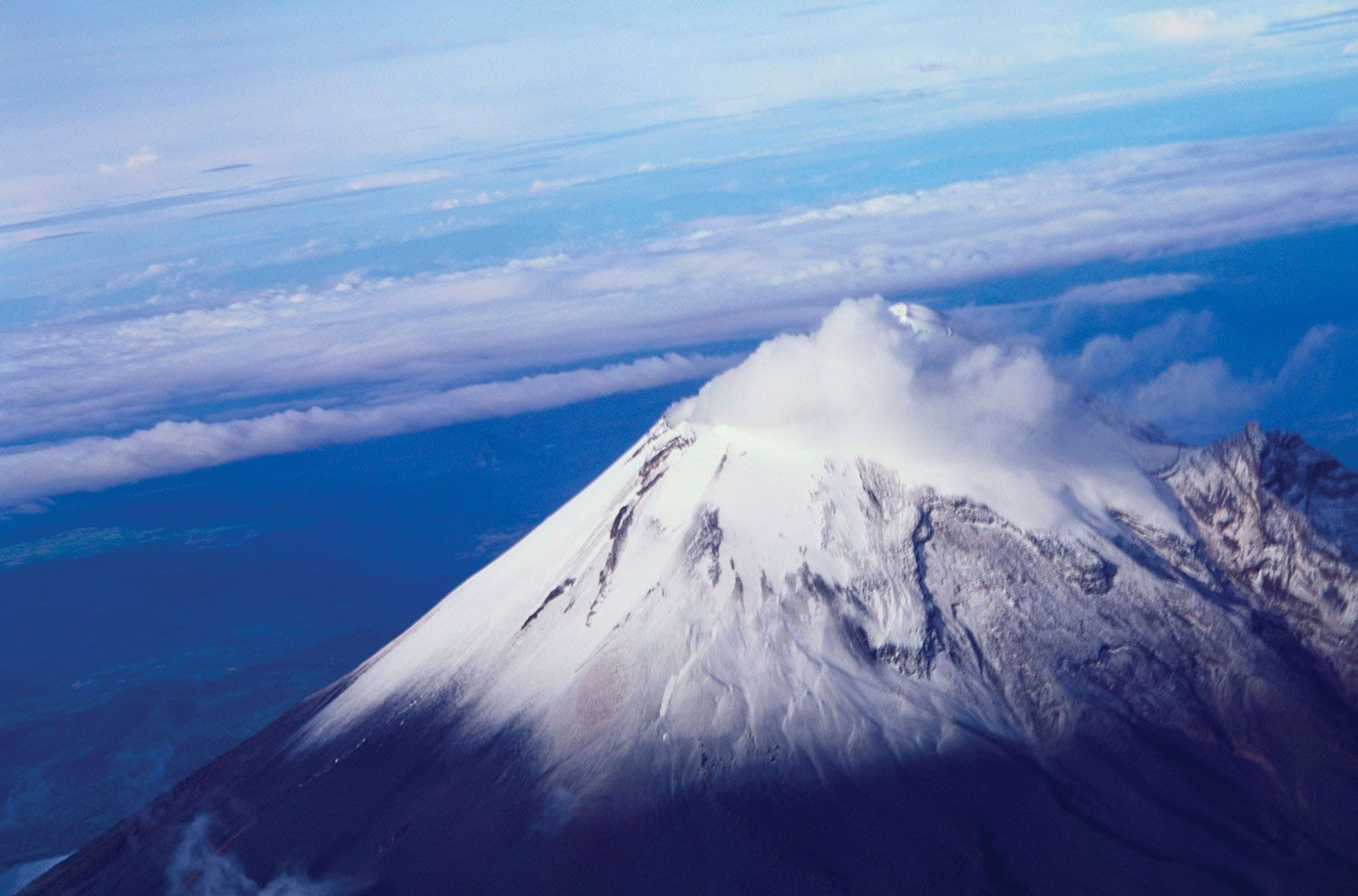 Citlaltépetl, Veracruz state, Mexico
Citlaltépetl, Veracruz state, Mexico
Citlaltépetl (Orizaba Peak), the highest point in Mexico, towering over Veracruz state, a testament to the country’s volcanic activity and mountainous terrain.
Connecting the Sierra Madre Occidental and Sierra Madre Oriental at the southern edge of the Mesa Central is the Cordillera Neo-Volcánica, also known as the Neo-Volcanic Axis or Trans-Volcanic Axis. This geologically active mountain range, marked by numerous volcanic cones, crosses Mexico from Cape Corrientes on the Pacific coast to Xalapa and Veracruz on the Gulf coast. It forms a dramatic backdrop to the states of Jalisco, Michoacán, Guerrero, México, Morelos, and Puebla, including Mexico City. This volcanic belt is home to iconic peaks like Citlaltépetl, Popocatépetl, and Iztaccíhuatl. Parícutin, one of the world’s youngest volcanoes, dramatically emerged from Michoacán farmlands between 1943 and 1952, a striking mexico facts example of recent geological activity. The region is also rich in valuable mineral deposits like silver, lead, zinc, copper, and tin. Immediately south of this range lies the hot, dry Balsas Depression, characterized by irregular basins and hilly outcrops, creating a unique and distinct landscape.
In contrast to the Pacific side, the Gulf Coastal Plain is significantly wider and extends approximately 900 miles along the Gulf of Mexico, from Tamaulipas to the Yucatán Peninsula, encompassing Veracruz and Tabasco states. The southeastern section includes the Tabasco Plain. The northern, triangular part of the plain, known for lagoons and swampy areas, reaches over 100 miles wide near the U.S. border, tapering southward. North of Tampico, an extension of the Sierra Madre Oriental reaches the coast, briefly interrupting the plain’s continuity. South of this point, the plain narrows and becomes irregular, widening again at the Isthmus of Tehuantepec’s northern end. These coastal plains are vital for agriculture and are another important element in the mexico facts of Mexico’s geography.
A panoramic view of Acapulco, a renowned coastal resort in Mexico, showcasing the beauty of the Mexican Riviera and the allure of its coastal destinations.
The Southern Highlands are a complex region of dissected mountain ranges and plateaus, including the Sierra Madre del Sur, Mesa del Sur, and the Chiapas Highlands (Sierra Madre de Chiapas). The Sierra Madre del Sur, a series of lower ranges, extends from around Puerto Vallarta to the Gulf of Tehuantepec. These crystalline mountains, reaching 7,000–8,000 feet, often meet the sea, forming a rugged coastline, part of which is known as the Mexican Riviera. Coastal destinations like Ixtapa-Zihuatanejo, Acapulco, and Puerto Escondido have become popular tourist spots. Inland basins, however, present a challenging environment for traditional farming. Further northeast is the Mesa del Sur, with stream-eroded ridges and small valleys at elevations of 4,000–5,000 feet. The Oaxaca Valley, the largest and most populated of these, is home to a predominantly indigenous population and is one of Mexico’s poorer regions, highlighting socio-economic mexico facts linked to geography.
The Isthmus of Tehuantepec bisects the Southern Highlands, a low-lying, narrow land bridge reaching less than 900 feet in elevation. Its central hilly area descends to narrow coastal plains in the south and the Tabasco Plain in the north, representing a significant geographical transition zone.
Finally, the Chiapas Highlands are an extension of Central American mountain ranges. Within these highlands, the low Sierra de Soconusco range runs along the Pacific coast. The Grijalva River valley lies to the northwest, parallel to the coast. Between this valley and the Tabasco Plain are highly dissected, folded, and faulted mountains. El Chichón, an active volcano in this region, caused significant destruction in 1982, another instance of impactful mexico facts related to natural disasters.
The Yucatán Peninsula, located northeast of the Tabasco Plain, extends northward, separating the Gulf of Mexico and the Caribbean Sea. This peninsula is characterized by its limestone (karst) terrain, generally uneven and pockmarked but rarely exceeding 500 feet in elevation. Surface drainage is minimal, and subterranean erosion has created caverns and sinkholes (cenotes). Off the northeastern tip lie the islands of Cozumel and Mujeres, near the booming resort city of Cancún. The unique geological formations of the Yucatán Peninsula are among the fascinating mexico facts of Mexico.
In conclusion, Mexico’s nine physiographic regions showcase a remarkable array of landscapes, each contributing to the country’s diverse identity and ecological richness. From the arid Baja California to the volcanic Cordillera Neo-Volcánica and the tropical Yucatán Peninsula, these regions offer a wealth of mexico facts for anyone interested in geography, nature, or the captivating story of this North American nation.
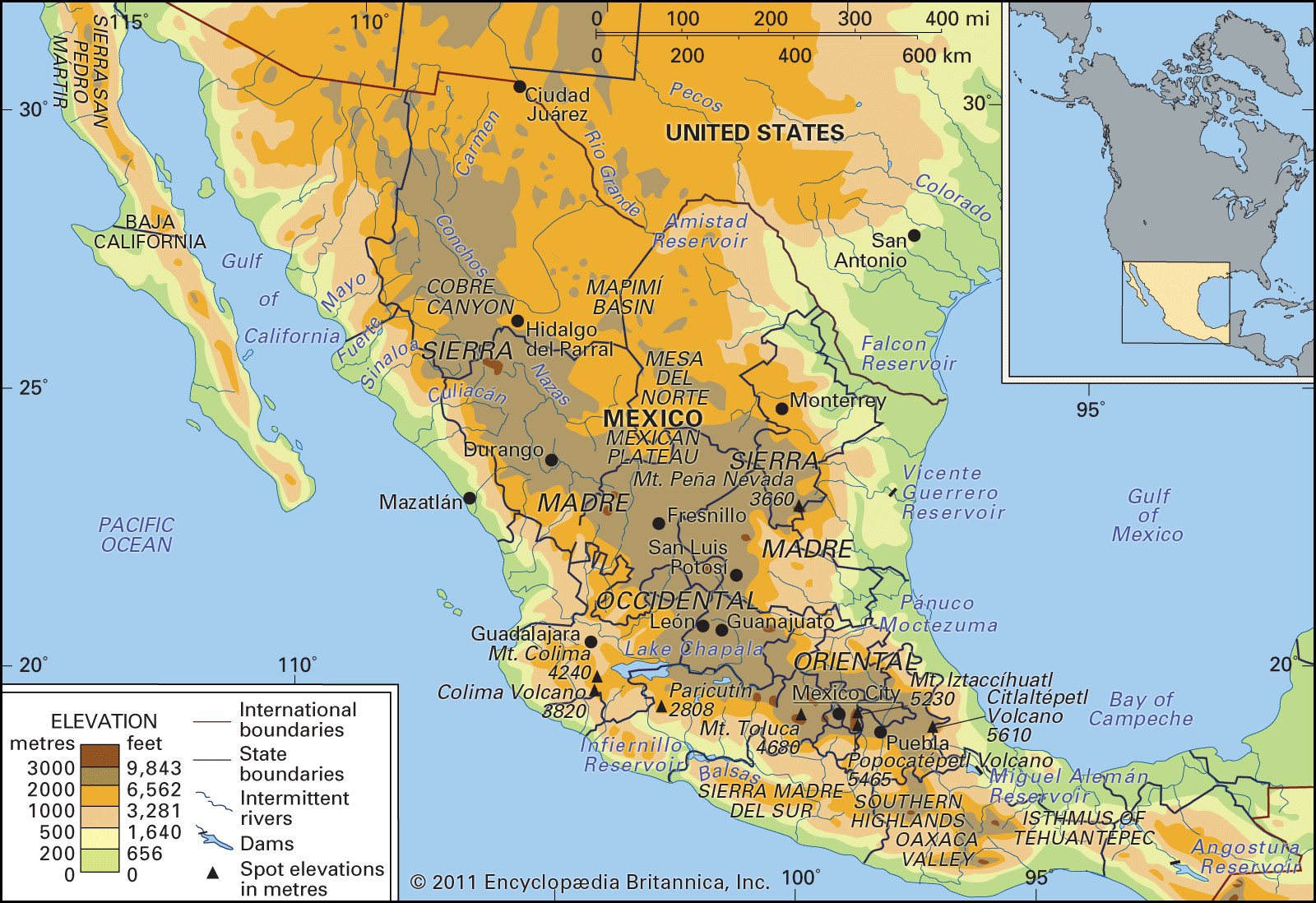
 Acapulco, Mexico
Acapulco, Mexico